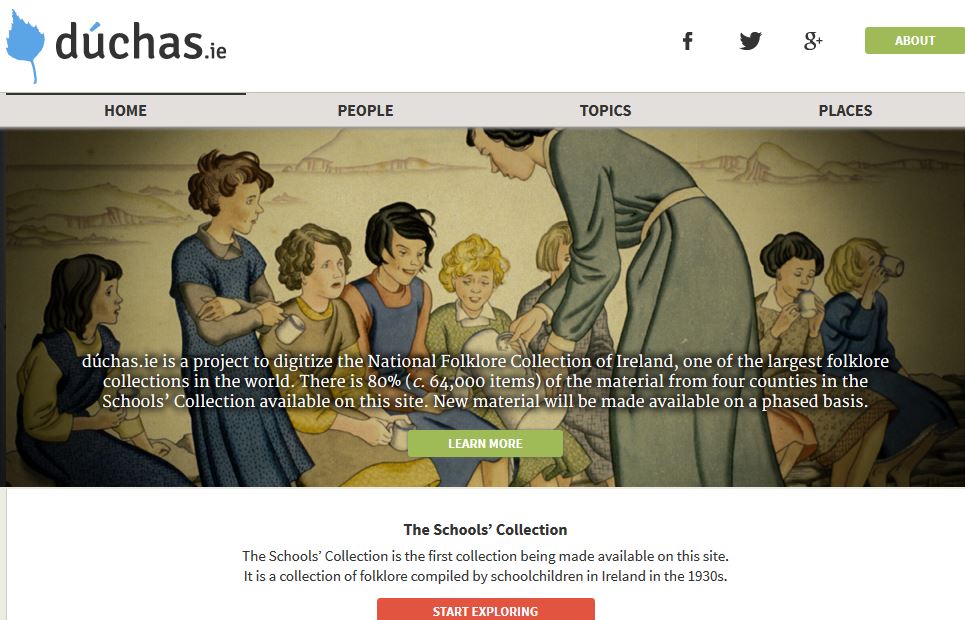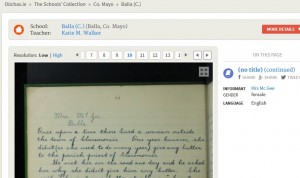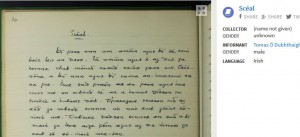
Main page of Dúchas website.
Ireland’s National Folklore Collection has just launched the first phase of a large digital program. The website, Dúchas.ie, has digital images from the Schools Collection, a nation-wide project carried out from 1937 to 1939 in which schoolchildren recorded oral history, folk tales, legends, information on games, customs, trades and crafts and more. 288,000 pages of student’s notebooks are now part of the National Folklore Collection. (More information on Dúchas.)
While many features are under construction, we may view a list of places in counties Dublin, Donegal, Mayo and Waterford, select placenames and view the notebooks of collected folklore. I plan to spend hours of the Christmas break reading through these notebooks and looking for treasure.
Here is an example from Mayo:

The informant is Mrs. McGee of Balla, and the teacher is Katie M. Walker, Balla, Co. Mayo.
It is the story of a woman who became unable to produce any butter no matter how long she churned. The priest prayed as she was churning and eventually the butter thief turned up screaming outside the door. The story provides background for the custom where visitors to a house are expected to take a turn with the churn.
A number of the collections from Co. Donegal are in Irish. As most students today are not familiar with the script or spellings used in the early 20th century, they will need assistance. Perhaps some of the content will eventually be available in transcription and I wonder if that transcription would also change the spellings to the standardized spellings that we use today?

This page is from the following:
The website provides the Archival Reference below each page image, and the name of both the collector, in this case the student, and the informant, normally an older person who shared a story or account with the student, are listed beside the page image.
It would be helpful to have precise instructions on how to cite items from this collection as I expect students will want to use them for their essays. Information also on where to seek permission to use, especially for publication, material in the collection. I have no doubt that this information will be forthcoming.
I will be very interested to hear how others use this collection and also comments you have on the website.
Gabhaim comhgháirdeas leis an bhfoireann a chuir an áis iontach seo ar fáil, agus beidh mé an-sásta é a thaispeáint do mhicléinn atá ag déanamh taighde sa bhéaloideas. That is to say, congratulations to the team who made this available!









